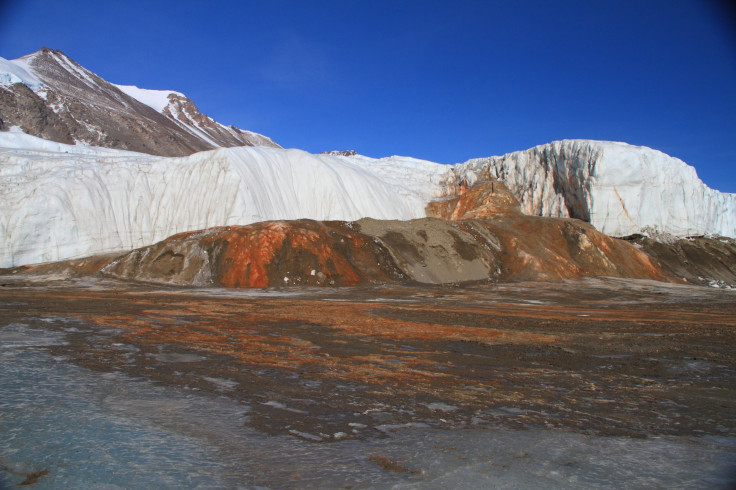Mystery Solved: Glacier Feeds Blood-Colored Waterfall In Antarctica

Blood Falls in Antarctica is famous for its red flow, but the source of that crimson has been a mystery for many years. Scientists now think they have an answer: The water runs red with a glacier’s blood.
Taylor Glacier is feeding the “waterfall,” which is really more like an ooze of briny water that turns red when exposed to air because of its high iron content. A study in the Journal of Glaciology revealed researchers used radar to track the flow and found its genesis beneath the glacier.
Even though the air temperature is close to 0 degrees Fahrenheit, the study said, the process of freezing water within the glacier actually releases heat. When combined with the lower freezing temperature of salty water, it’s possible for liquid to exist within a super cold glacier.
Read: What Night Lights on Earth Look Like From Space
“While it sounds counterintuitive, water releases heat as it freezes, and that heat warms the surrounding colder ice,” glaciologist Erin Pettit said in a statement from the University of Alaska Fairbanks. “Taylor Glacier is now the coldest known glacier to have persistently flowing water.”
The university said the salty water might “have been trapped under Taylor Glacier for more than 1 million years,” slowly feeding Blood Falls.
The discovery may challenge what we think we know about glaciers. Since Taylor Glacier sits on top of this flow of salty water, it stands to reason that others at subfreezing temperatures may also. The researchers wrote in their study it’s possible “a cold glacier with an average ice temperature of [14 to 17 degrees Fahrenheit] may be able to sustain a freshwater hydrologic system.”
See also:
© Copyright IBTimes 2024. All rights reserved.





















